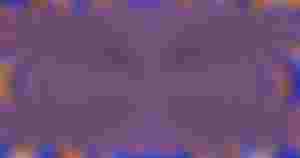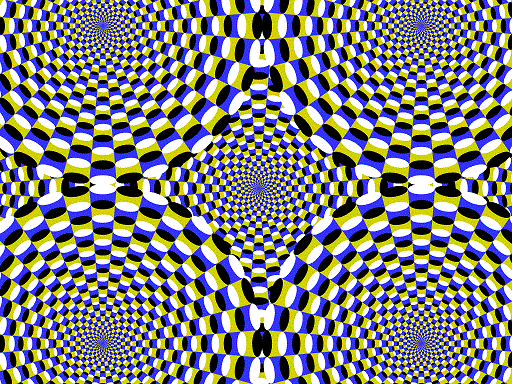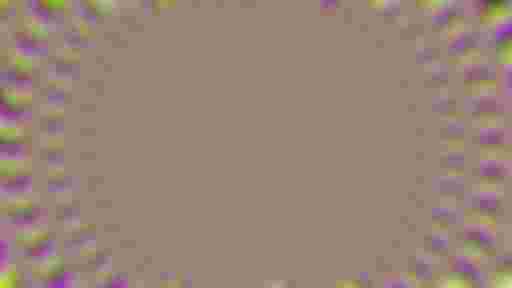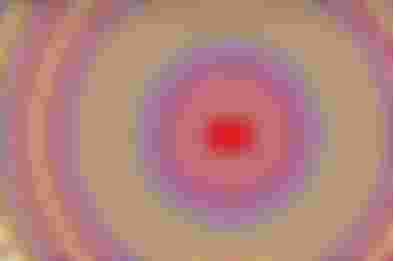We often encounter on social networks or in the circulating mail messages a set of illusory pictures that you think move in a continuous infinite, even though it is a static image. So what are these pictures known as a Stereogram? And why are there some people who cannot distinguish it?

Charles Wheatstone discovered holograms in 1838. He worked on creating the first hologram based on a set of mirrors that allow a person to see a three-dimensional image from two slightly different two-dimensional images.
From here appeared Stereogram or hidden 3D image technology, which is based on combining two different images to produce one three-dimensional image so that the features of the first image are clear to the viewer, while the second image is hidden at a precise angle in the image, where what the right eye sees can be seen by the left eye and through Vision centers in the brain these parts merge to see a three-dimensional image.
When you view the stereograms, you will only see them as repeating shapes, but as soon as you look closely you will discover an amazing 3D image inside, you will think at first glance that it is a game of imagination, but very realistic.
You need to defocus your eyes and look through the hologram. The image becomes blurry and doubled, and this is exactly what we want until you reach to see the 3D object inside the image. This will make the background of the pattern overlap each other and each eye will see a slightly different image from the other, the disparity in the views will make your brain see a hidden 3D image.

Some people with binocular vision may not be able to see a hidden image.
In order to see the holograms better, you need to be patient and patient when you see the image.
We can use repeated lines instead of random points if these lines do not have large monochrome horizontal spots. We will get a hologram, the important thing is that the pattern should not have large horizontal colorless areas. It should be as colorful as possible.
The depth map, which is an image that contains information related to the distance of surfaces of all stereoscopic objects, is the most important part of the hologram. We cannot create a grid hologram unless we have a very good depth map. Unfortunately, these are the most difficult to create. We can create them with some 3D modeling software like 3D Studio.

The illusion should be a black and white image, with black representing the background and the different shades of white as dots that float over the background. The whiter the points are, the closer the points are to you.
You can also create it simply by making a white shape on a black background. This will not have any depth differences whatsoever.
How can we distinguish?

By computer of course! In fact, the process is simpler than you can imagine. Since the illusion requires you to look "through" the image, start by thinking of a part of the glass rather than an image. Now imagine a pin placed behind a sheet of glass, and a beam drawn from the head of the pin to each eye (most people's eyes are separated by about 7 cm or 2.5 inches).
Consider the points where the beam passes through the glass. If the observer and glass are fixed, then when the pin is moved backwards these points move away. When the pin is brought forward, the points aggregate. Both points are always on a horizontal line. The distance between the two points on the glass is related to the distance of the pin behind the glass by a simple mathematical formula, commonly known as "similar triangles."
Why are some people unable to distinguish stereograms?
Most people find distinguishing on Stereograms very difficult for the first time. They have to focus on a different point from where they are looking. This is known as "unpairing" the person's vision process. People instinctively focus on the same point they are looking at, and this is the main obstacle to seeing images of this nature.
This is why most stickers come with a reflective surface like a pane of glass or plastic covering it. If you try to look at your own reflection on the image, you will be looking at twice the distance that the actual poster is. Almost everyone notes that while this sometimes helps beginners see the 3D effect for the first time (and maybe even the first few times), seasoned viewers don't need any such help. In fact, the reflection is usually very distracting and reduces the quality of the 3D effect for an experienced viewer.
Imagine you are looking at an image on a printed page or computer screen, adjusting your eyes in a way that most people can easily learn, and suddenly things appear in vivid 3D. Many people have already tried this with the Magic Eye book and related photos that were hugely popular in the 1990s.

But what is not well known is that mono hologram technology has come a long way since those early days. The big breakthrough came when algorithms were discovered that could plot texture on the surface of mono holograms. For example the size of the image below will be about 7 inches on your computer screen. If you know how to adjust your eyes to see in 3D, you will see this image expand towards you.

The hidden 3D Stereogram images are characterized by the accuracy of the details they include, and many people face a problem in recognizing the subtle details inherent in them, as recognizing these images requires the ability to focus and training, and if you are not able to see the details for the first time, you should not despair, but rather try It will appear in front of you those wonderful and beautiful details.






your article is very informative , i like it